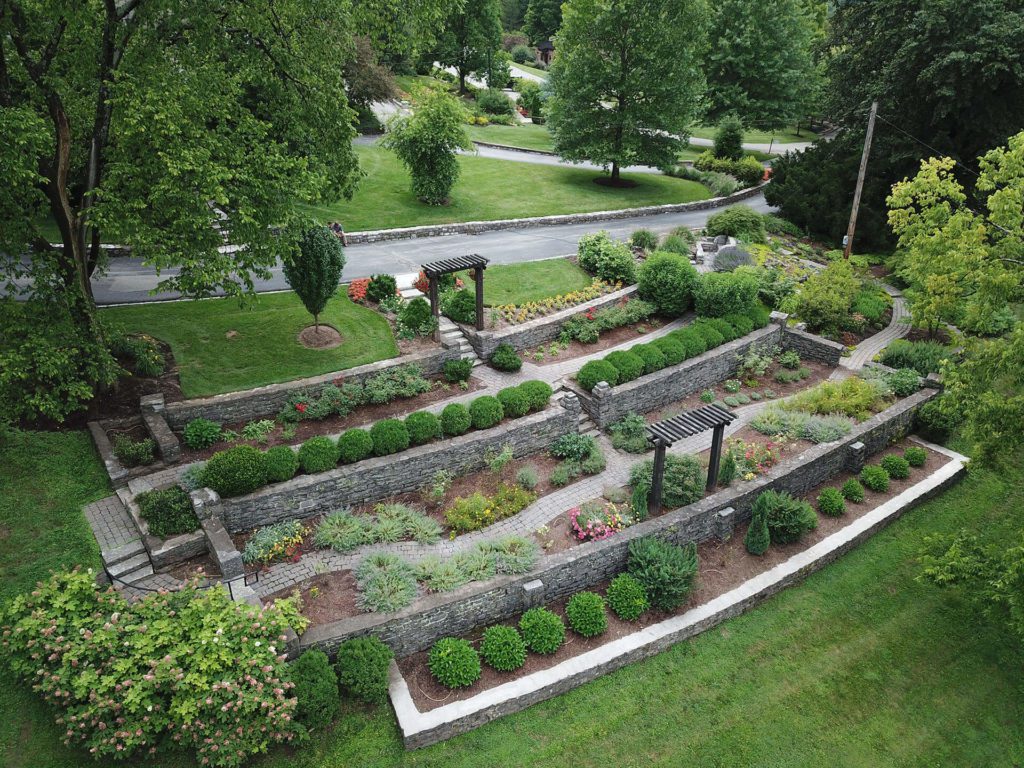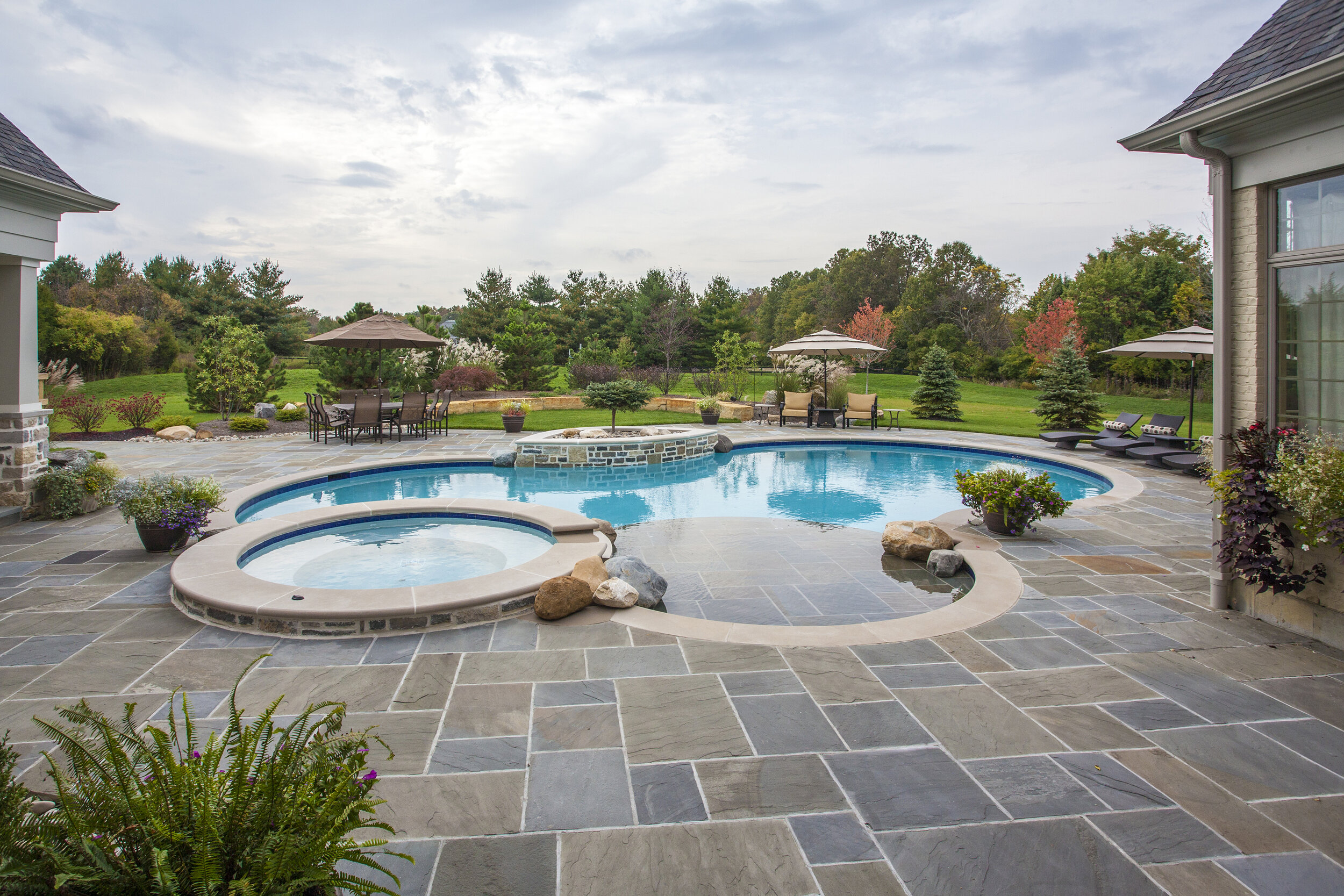The Importance of Comprehending Various Types of Landscape Design for Your Yard
Comprehending the different types of landscaping is a necessary element in crafting a garden that not only mirrors individual preference but likewise fulfills eco-friendly requirements. Each landscaping style-- be it official, home, sustainable, or city-- provides distinctive benefits that can substantially influence the general health and wellness and looks of your exterior room.
Advantages of Landscape Design Understanding
Comprehending the fundamentals of landscape design uses countless benefits for both newbie and knowledgeable gardeners alike. A strong understanding of landscaping concepts enables people to create practical and visually attractive outdoor rooms that line up with their personal choices and the particular features of their gardens.
One significant advantage is improved environmental health. Understanding of native plants and sustainable methods allows garden enthusiasts to cultivate ecological communities that promote biodiversity while lessening the need for chemical plant foods and chemicals. Furthermore, recognizing soil kinds and drainage can cause much healthier plant growth and decreased disintegration.
Landscaping understanding additionally enhances the aesthetic worth of a building. By finding out about style elements such as range, texture, and color, garden enthusiasts can create natural and welcoming landscapes that boost aesthetic appeal. This not only raises personal pleasure yet can also enhance property value.
Moreover, educated garden enthusiasts can conserve time and resources. Identifying the right plants for details problems, such as light and dampness degrees, ensures that efforts are not wasted on unsuitable selections. Eventually, a comprehensive understanding of landscaping empowers people to make educated decisions, cultivating a much more fulfilling horticulture experience.
Review of Landscape Design Kinds
Landscape design includes a range of strategies and styles, each tailored to meet the distinct needs and choices of garden enthusiasts. Recognizing these varied types is crucial for creating an outdoor room that lines up with environmental considerations and individual tastes.
One preferred kind is conventional landscaping, identified by organized layouts, distinct flowerbeds, and making use of in proportion plantings. This design usually highlights a sense of order and consistency within the garden - Landscaping Company. In comparison, naturalistic landscaping concentrates on resembling the charm of nature, utilizing indigenous plants and organic kinds to produce a more loosened up and informal environment
Sustainable landscape design has gained grip, promoting environmentally friendly techniques that preserve water and decrease chemical usage. This method often includes xeriscaping, which uses drought-resistant plants ideal for arid climates. In addition, metropolitan landscape design addresses the difficulties of minimal space in city atmospheres, often using upright gardens and rooftop rooms to optimize greenery.
Formal Landscape Design Explained
Defined by its thorough design and structured components, official landscaping produces an ambience of elegance and class in exterior spaces. This style highlights proportion, geometric forms, and well-defined lines, commonly including manicured hedges, topiaries, and orderly flower beds. The general result is a refined and sleek environment that accentuates architectural functions and improves the appeal of the bordering landscape.
In official landscape design, pathways are normally straight and might be lined with consistent products such as block or rock. These courses usually lead to focal points such as fountains, sculptures, or ornamental trees, additionally improving the structured nature of the style. Color combinations tend to be much more restricted, focusing on harmonious combinations that promote a serene atmosphere.
Water attributes in official landscapes are generally made with accuracy, commonly showing up as rectangle-shaped or circular swimming pools. The cautious placement of plants is essential, with species chosen for their capacity to preserve a tidy look throughout the seasons. On the whole, official landscaping is excellent for those who appreciate order and elegance, providing a classic visual that can substantially elevate the worth and charm of outside spaces.
Home Garden Characteristics
Home gardens commonly evoke a feeling of appeal and whimsy, blending a selection of plants in a relatively careless yet harmonious setup. Characterized by their lavish, informal design, these yards normally feature a diverse mix of blooming perennials, annuals, herbs, and veggies. This varied growing not only produces aesthetic interest however additionally attracts valuable insects and promotes a well balanced community.
A crucial feature of cottage gardens is their usage of traditional materials and frameworks. Rock paths, rustic fencing, and wooden trellises are frequently included to enhance the garden's charming charm. In addition, the addition of seating locations, such as benches or arbors, urges leisure within this serene environment.
Color plays a substantial duty in home gardens, with an emphasis on soft pastels and vivid hues that check evoke a sense of nostalgia. Flowers like hollyhocks, foxgloves, and roses are staples, usually intermingled with great smelling natural herbs such as lavender and thyme.
Cottage gardens show a viewpoint of accepting nature's changability, leading to a special and inviting area. By prioritizing biodiversity and aesthetic charm, they produce a picturesque setup for both yard fanatics and informal viewers alike.
Lasting Landscaping Practices
Integrating sustainable landscape design practices is vital for producing eco-friendly yards that grow while decreasing their eco-friendly effect. Landscaping Company. Lasting landscaping focuses on the reliable usage of resources, promoting biodiversity, and boosting the native environment
One key technique is choosing native plants, which are well-adapted to regional problems and require much less water, plant food, and pesticides. This not just saves resources yet likewise supports regional wildlife, consisting of pollinators. Carrying out water-efficient irrigation systems, such as drip watering or rain harvesting, additionally saves water while making certain that plants obtain appropriate wetness.

Moreover, lowering lawn locations and integrating hardscaping elements can minimize upkeep and resource usage. These practices promote a more sustainable landscape that requires less inputs and gives environmental benefits. By embracing these techniques, gardeners can develop areas that are not only lovely however additionally Recommended Reading contribute favorably to the environment, cultivating an unified balance between nature and human activity.

Conclusion
In verdict, an extensive understanding of various landscaping kinds is necessary for developing a visually pleasing and ecologically lasting garden. Each design, from official to home yards and lasting techniques, offers unique advantages that improve biodiversity and source efficiency. This understanding promotes informed choices that add to the wellness of both the yard and its surrounding ecosystem. Ultimately, embracing diverse landscaping approaches promotes an unified connection between outside areas and their environments, advertising lasting eco-friendly equilibrium.
Recognizing the various types of landscaping is an essential component in crafting a garden that not just shows personal preference yet likewise meets environmental demands. Each landscaping design-- be it formal, home, sustainable, or metropolitan-- offers distinct benefits that can dramatically affect the overall health and aesthetics of your exterior room. In contrast, naturalistic landscaping focuses on resembling the charm of nature, using organic kinds and native plants to create a much more relaxed and casual atmosphere.
In addition, city landscape design addresses the challenges of minimal go right here area in city settings, often utilizing vertical yards and roof areas to maximize greenery.
In final thought, a detailed understanding of different landscaping types is essential for producing an aesthetically pleasing and ecologically lasting yard. (Landscaping Company)